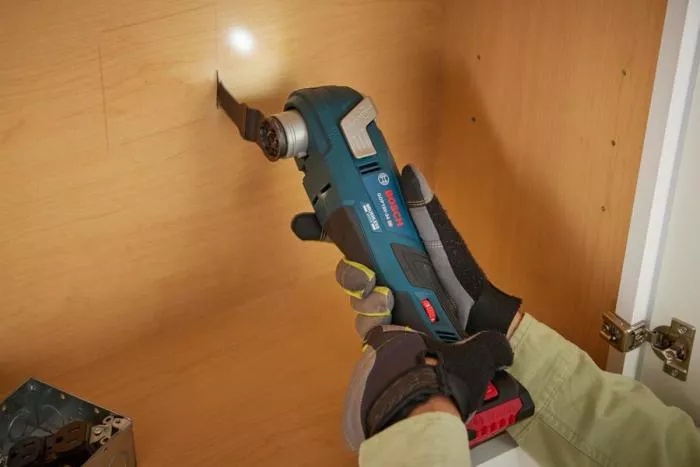Oscillating multi – tools may seem similar to other cutting and sanding tools at first glance, but they offer unique capabilities that make them a valuable addition to any toolbox. In this article, we’ll explore six key functions of an oscillating multi – tool and help you decide if it’s a power tool you should own.
How an Oscillating Multi – Tool Works
Before diving into its uses, it’s important to understand how an oscillating multi – tool operates. Conceptually, it’s straightforward—the motor moves back and forth, creating an oscillating motion that is transferred to any attached accessory. The angle of oscillation, typically ranging from 3.2° to 4.0°, affects how quickly the tool works. A wider angle means more interaction between the accessory and the workpiece.
The speed of oscillation is another crucial factor. Pro models can reach up to 20,000 oscillations per minute (OPM), and most quality models offer adjustable speeds. Combining high speed with a large oscillating angle results in faster working speeds.
Key Functions
Plunge Cuts
Oscillating tools are excellent for making plunge cuts, which are otherwise difficult or impossible with many other tools. They can be used to start a mortise, make a notch, or cut trim or casings for flooring. To make a plunge cut, simply turn on the tool and plunge the blade straight into the material. Hold the tool steady and gently push it through the cut. You can also install blades at different angles to better reach the cutting area or create a more comfortable cutting position.
For longer straight cuts, use a segmented half – moon blade. For plunging and small cutout cuts, a straight plunge blade is ideal. Bi – metal and carbide blades are suitable for cutting through metal, with carbide blades being more expensive but having a longer lifespan.
Detail Sanding
By swapping the blade attachment for a sanding attachment, an oscillating multi – tool can be used for detail sanding. While it may not match the speed and coverage of handheld sanders, it excels in small areas where standard sanders are too large. It provides excellent control and can reach areas that other sanders cannot access. To sand, turn on the tool, press the sanding pad against the material, and move it in a circular motion for an even finish.
Stripping, Peeling, and Scraping
An oscillating multi – tool with a scraping blade can easily remove old paint, linoleum floors, and other stubborn materials. It’s particularly useful for small areas where larger tools may not be effective. To use this function, drop the angle of the tool so that it’s close to parallel with the surface. Slide the edge of the blade under the material you want to remove and push the tool forward. You can also adjust the attachment angle for a more comfortable position.
Removing Grout and Caulk
Removing old grout and caulk is one of the most effective uses of an oscillating multi – tool. A half – moon diamond blade is recommended for this task. It works like low – grit sandpaper on the edge of the blade but doesn’t get dull like sandpaper. Start by gently pushing the edge down into the material until you get through it completely, then push the tool forward along the caulk or grout line.
Conclusion
Oscillating multi – tools offer a wide range of functions that make them a versatile addition to any toolbox. Whether you need to make precise cuts, sand small areas, remove old materials, or strip paint, an oscillating multi – tool can handle the job with ease. While they may not replace other specialized tools entirely, their unique capabilities make them a valuable tool for any DIY enthusiast or professional. So, if you’re looking for a tool that can do it all, consider adding an oscillating multi – tool to your collection.
Related topics:
- We Tested the Best Oscillating Tools, See Our Top Picks
- Best Oscillating Multi-Tool Reviews 2025
- 7 Best Oscillating Multi-Tools in 2025

